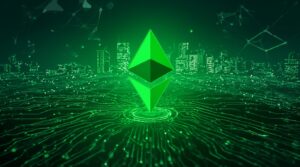Smart home hubs have become the essential backbone of modern connected homes, acting as central command centers that unite diverse smart devices into cohesive, automated systems. As we progress through 2025, the landscape of smart home technology continues to evolve with improved local processing, better interoperability standards, and enhanced backup capabilities. This article examines the current state of smart home hubs, with special focus on popular platforms like Home Assistant and SmartThings, while analyzing their features, benefits, and limitations.
#1
A smart home hub is hardware or software that connects devices on a home automation network and controls communications among them. Acting as the heart of a smart home network, these hubs tie together various devices and systems in a centralized platform, simplifying network management for users through a single application interface. The primary value of a hub is its ability to act as a translator between different communication protocols, allowing devices that wouldn't normally be able to communicate with each other to work together seamlessly.
Smart home hubs are particularly valuable for Internet of Things (IoT) devices that use protocols like Zigbee or Z-Wave, which don't directly communicate with standard Wi-Fi or Bluetooth systems found in smartphones and computers. For example, if a smartphone wants to control a smart lock that only uses Zigbee, the hub acts as the essential intermediary translating between these different communication methods.
Control Capabilities and Ecosystem Integration
Modern hubs can control an impressive array of smart home devices, including thermostats, lighting systems, door locks, security cameras, smoke detectors, and household appliances. This centralization creates opportunities for sophisticated automation scenarios - such as programming lights to turn on when you arrive home, or having your garage door open automatically as your phone approaches your property.
An additional benefit of smart home hubs is their ability to offload traffic from Wi-Fi networks, helping to ease network congestion in homes with numerous connected devices. This network management aspect becomes increasingly important as households add more IoT devices to their environments.
Understanding Smart Home Hubs
Definition and Core FunctionalityA smart home hub is hardware or software that connects devices on a home automation network and controls communications among them. Acting as the heart of a smart home network, these hubs tie together various devices and systems in a centralized platform, simplifying network management for users through a single application interface. The primary value of a hub is its ability to act as a translator between different communication protocols, allowing devices that wouldn't normally be able to communicate with each other to work together seamlessly.
Smart home hubs are particularly valuable for Internet of Things (IoT) devices that use protocols like Zigbee or Z-Wave, which don't directly communicate with standard Wi-Fi or Bluetooth systems found in smartphones and computers. For example, if a smartphone wants to control a smart lock that only uses Zigbee, the hub acts as the essential intermediary translating between these different communication methods.
Control Capabilities and Ecosystem Integration
Modern hubs can control an impressive array of smart home devices, including thermostats, lighting systems, door locks, security cameras, smoke detectors, and household appliances. This centralization creates opportunities for sophisticated automation scenarios - such as programming lights to turn on when you arrive home, or having your garage door open automatically as your phone approaches your property.
An additional benefit of smart home hubs is their ability to offload traffic from Wi-Fi networks, helping to ease network congestion in homes with numerous connected devices. This network management aspect becomes increasingly important as households add more IoT devices to their environments.
#2
Smart home systems broadly fall into two categories: cloud-based and local. The fundamental difference between these approaches concerns where the processing and automation logic happens - either on remote servers accessed via the internet or directly on local hardware within your home.
Cloud-based systems like Apple HomeKit, Google Home, and Amazon Alexa rely on internet connectivity to function fully. In these ecosystems, devices either connect to the web directly or link to a central hub that communicates with cloud services. The popular voice control devices like Amazon Echo speakers, Google Nest speakers, or Apple HomePods serve as access points to these cloud systems.
The main drawback of cloud-dependent systems becomes evident during internet outages - when the cloud connection fails, automated functions may stop working. For example, if your internet connection goes down, a cloud-based automation that turns on lights when a smart lock is activated might fail completely.
Local systems, by contrast, process automation rules and device commands directly on hardware within your home network, offering greater reliability during internet outages and often providing faster response times for automations.
Protocol Support and Device Compatibility
The range of protocols supported (Z-Wave, Zigbee, Thread, Bluetooth, Wi-Fi, Matter) significantly impacts a hub's compatibility with different smart home devices. More advanced hubs support multiple protocols, increasing the universe of devices they can control and coordinate.
Proprietary hubs often come with their own limitations. Many smart home devices include manufacturer-specific hubs, but these systems frequently cannot integrate with other manufacturers' ecosystems. This isolation prevents cross-brand automations - such as having smoke detectors from one company trigger door locks from another to unlock during emergencies.
Types of Smart Home Systems
Cloud-Based vs. Local ProcessingSmart home systems broadly fall into two categories: cloud-based and local. The fundamental difference between these approaches concerns where the processing and automation logic happens - either on remote servers accessed via the internet or directly on local hardware within your home.
Cloud-based systems like Apple HomeKit, Google Home, and Amazon Alexa rely on internet connectivity to function fully. In these ecosystems, devices either connect to the web directly or link to a central hub that communicates with cloud services. The popular voice control devices like Amazon Echo speakers, Google Nest speakers, or Apple HomePods serve as access points to these cloud systems.
The main drawback of cloud-dependent systems becomes evident during internet outages - when the cloud connection fails, automated functions may stop working. For example, if your internet connection goes down, a cloud-based automation that turns on lights when a smart lock is activated might fail completely.
Local systems, by contrast, process automation rules and device commands directly on hardware within your home network, offering greater reliability during internet outages and often providing faster response times for automations.
Protocol Support and Device Compatibility
The range of protocols supported (Z-Wave, Zigbee, Thread, Bluetooth, Wi-Fi, Matter) significantly impacts a hub's compatibility with different smart home devices. More advanced hubs support multiple protocols, increasing the universe of devices they can control and coordinate.
Proprietary hubs often come with their own limitations. Many smart home devices include manufacturer-specific hubs, but these systems frequently cannot integrate with other manufacturers' ecosystems. This isolation prevents cross-brand automations - such as having smoke detectors from one company trigger door locks from another to unlock during emergencies.
#3
Home Assistant has established itself as the premier open-source smart home platform, with a strong focus on local processing and user privacy. The platform's "local first" philosophy means most operations occur within your home network rather than relying on cloud services.
The January 2025 release (version 2025.1) brought a complete overhaul of the backup system, introducing automated backups, encrypted Home Assistant Cloud backup storage, configurable retention policies, and the ability for integrations to offer backup storage locations. This comprehensive update demonstrates the platform's ongoing development and community-focused improvements.
Home Assistant offers exceptional flexibility and powerful integration capabilities with a wide range of services and devices. It can serve as a central hub for virtually any smart home ecosystem, allowing users to integrate devices that wouldn't normally work together. The platform runs on various hardware options, with Raspberry Pi being a popular choice for hosting the software.
The primary drawback of Home Assistant is its steep learning curve, which can intimidate inexperienced users. Setting up and configuring the system requires more technical knowledge than commercial alternatives, though this complexity brings significantly greater customization options.
Samsung SmartThings
SmartThings continues to be one of the most accessible commercial smart home platforms, combining a polished user interface with relatively straightforward setup procedures. As of 2025, Samsung has enhanced the platform's energy monitoring capabilities, allowing users to track which SmartThings-enabled appliances are increasing energy costs.
The platform has introduced advanced presence sensing technology that automatically adjusts device behavior based on room occupancy without requiring manual automation setup. This "set it and forget it" approach makes SmartThings particularly appealing to users who want smart home benefits without extensive configuration requirements.
Despite these advances, SmartThings has notable limitations, particularly its cloud dependency for many functions and more restricted customization options compared to open-source alternatives. When the internet connection is down or Samsung's servers experience issues, certain automations may not function properly.
Major Smart Home Hub Platforms
Home AssistantHome Assistant has established itself as the premier open-source smart home platform, with a strong focus on local processing and user privacy. The platform's "local first" philosophy means most operations occur within your home network rather than relying on cloud services.
The January 2025 release (version 2025.1) brought a complete overhaul of the backup system, introducing automated backups, encrypted Home Assistant Cloud backup storage, configurable retention policies, and the ability for integrations to offer backup storage locations. This comprehensive update demonstrates the platform's ongoing development and community-focused improvements.
Home Assistant offers exceptional flexibility and powerful integration capabilities with a wide range of services and devices. It can serve as a central hub for virtually any smart home ecosystem, allowing users to integrate devices that wouldn't normally work together. The platform runs on various hardware options, with Raspberry Pi being a popular choice for hosting the software.
The primary drawback of Home Assistant is its steep learning curve, which can intimidate inexperienced users. Setting up and configuring the system requires more technical knowledge than commercial alternatives, though this complexity brings significantly greater customization options.
Samsung SmartThings
SmartThings continues to be one of the most accessible commercial smart home platforms, combining a polished user interface with relatively straightforward setup procedures. As of 2025, Samsung has enhanced the platform's energy monitoring capabilities, allowing users to track which SmartThings-enabled appliances are increasing energy costs.
The platform has introduced advanced presence sensing technology that automatically adjusts device behavior based on room occupancy without requiring manual automation setup. This "set it and forget it" approach makes SmartThings particularly appealing to users who want smart home benefits without extensive configuration requirements.
Despite these advances, SmartThings has notable limitations, particularly its cloud dependency for many functions and more restricted customization options compared to open-source alternatives. When the internet connection is down or Samsung's servers experience issues, certain automations may not function properly.
#4
1. Hubitat offers a locally-processed automation platform that provides many of the benefits of Home Assistant with somewhat easier setup, though with fewer integration options.
2. Voice assistant ecosystems from Amazon (Alexa), Google (Google Home/Nest), and Apple (HomeKit) continue to serve as entry points for many users, though they typically have deeper cloud dependencies.
3. Matter-compatible hubs like the Aqara Hub M3 are gaining prominence in 2025, offering enhanced interoperability with the growing ecosystem of Matter-certified devices. The Aqara Hub M3 connects Zigbee and Thread devices through the Aqara Home app, serving as a primary hub for Matter-enabled devices while supporting local control across the network.
Other Notable Systems
Beyond the two major platforms highlighted above, several other systems compete in the smart home hub market:1. Hubitat offers a locally-processed automation platform that provides many of the benefits of Home Assistant with somewhat easier setup, though with fewer integration options.
2. Voice assistant ecosystems from Amazon (Alexa), Google (Google Home/Nest), and Apple (HomeKit) continue to serve as entry points for many users, though they typically have deeper cloud dependencies.
3. Matter-compatible hubs like the Aqara Hub M3 are gaining prominence in 2025, offering enhanced interoperability with the growing ecosystem of Matter-certified devices. The Aqara Hub M3 connects Zigbee and Thread devices through the Aqara Home app, serving as a primary hub for Matter-enabled devices while supporting local control across the network.
#5
The contrast in user experience between platforms represents one of the most significant differentiators for consumers. SmartThings offers a polished, intuitive interface that makes it accessible to newcomers in the smart home space. Its mobile app provides straightforward device management and automation creation with minimal technical knowledge required.
Home Assistant, while incredibly powerful, presents a steeper learning curve that demands more technical understanding. Users may need to edit configuration files, understand YAML syntax, or even write simple code for complex automations. However, this initial complexity pays dividends in customization options and capabilities not available on more restrictive platforms.
Local vs. Cloud Processing Tradeoffs
The fundamental architectural difference between cloud-dependent and locally-processed systems creates distinct advantages and disadvantages:
Cloud-dependent systems like SmartThings offer convenient remote access and often require less powerful local hardware, but suffer from potential outages when internet connectivity fails and raise more privacy concerns about data leaving the home.
Locally-processed systems like Home Assistant provide faster response times, greater reliability during internet outages, and enhanced privacy since data remains within the home network. The tradeoff comes in potentially more complex remote access configuration and the need for more robust local hardware to run the system.
Integration Capabilities
Home Assistant excels in its integration capabilities, connecting with over 1,000 different systems and devices. Its open architecture allows the community to develop integrations for virtually any smart device, even those without official support.
SmartThings offers good integration with major brands and growing Matter support, but generally provides fewer options for integrating unusual or specialized devices. The ecosystem tends to focus on mainstream consumer products rather than the hobbyist or specialized devices that Home Assistant can often accommodate.
Comparative Analysis of Smart Home Hubs
User Experience and Setup ComplexityThe contrast in user experience between platforms represents one of the most significant differentiators for consumers. SmartThings offers a polished, intuitive interface that makes it accessible to newcomers in the smart home space. Its mobile app provides straightforward device management and automation creation with minimal technical knowledge required.
Home Assistant, while incredibly powerful, presents a steeper learning curve that demands more technical understanding. Users may need to edit configuration files, understand YAML syntax, or even write simple code for complex automations. However, this initial complexity pays dividends in customization options and capabilities not available on more restrictive platforms.
Local vs. Cloud Processing Tradeoffs
The fundamental architectural difference between cloud-dependent and locally-processed systems creates distinct advantages and disadvantages:
Cloud-dependent systems like SmartThings offer convenient remote access and often require less powerful local hardware, but suffer from potential outages when internet connectivity fails and raise more privacy concerns about data leaving the home.
Locally-processed systems like Home Assistant provide faster response times, greater reliability during internet outages, and enhanced privacy since data remains within the home network. The tradeoff comes in potentially more complex remote access configuration and the need for more robust local hardware to run the system.
Integration Capabilities
Home Assistant excels in its integration capabilities, connecting with over 1,000 different systems and devices. Its open architecture allows the community to develop integrations for virtually any smart device, even those without official support.
SmartThings offers good integration with major brands and growing Matter support, but generally provides fewer options for integrating unusual or specialized devices. The ecosystem tends to focus on mainstream consumer products rather than the hobbyist or specialized devices that Home Assistant can often accommodate.
#6
The Matter standard continues to gain momentum in 2025, with an increasing number of hub manufacturers adding support for this interoperability protocol. The standard aims to create a more unified smart home ecosystem where devices from different manufacturers can work together seamlessly.
New Matter-compatible hubs like the Aqara Hub M3 are emerging as important bridge devices, connecting Thread and Zigbee devices to the broader Matter ecosystem. These hubs are designed to work with approximately 130 Thread and Zigbee Matter smart home devices, significantly expanding compatibility options for consumers.
Enhanced Backup and Recovery Systems
Home Assistant's 2025.1 release exemplifies the industry trend toward more robust data protection and system recovery options. The release introduced encrypted backups by default, automated backup scheduling, configurable retention policies, and even cloud backup storage options for Home Assistant Cloud subscribers.
These improvements address a critical concern for smart home users - protecting their complex configurations and automation setups from data loss. As smart homes become more sophisticated, the value of these configurations increases, making backup and recovery features increasingly important.
Energy Management Features
Energy efficiency has become a central focus for smart home platforms in 2025. Samsung's SmartThings now offers detailed energy monitoring through its app's Energy Dashboard, allowing users to identify which appliances are driving up costs.
The platform has also enhanced its automatic energy-saving features, using presence sensing to adjust device behavior based on occupancy without requiring manual automation setup. These developments reflect the growing importance of sustainability and cost management in smart home ecosystems.
Latest Developments in Smart Home Hubs (2025)
Matter Standard AdoptionThe Matter standard continues to gain momentum in 2025, with an increasing number of hub manufacturers adding support for this interoperability protocol. The standard aims to create a more unified smart home ecosystem where devices from different manufacturers can work together seamlessly.
New Matter-compatible hubs like the Aqara Hub M3 are emerging as important bridge devices, connecting Thread and Zigbee devices to the broader Matter ecosystem. These hubs are designed to work with approximately 130 Thread and Zigbee Matter smart home devices, significantly expanding compatibility options for consumers.
Enhanced Backup and Recovery Systems
Home Assistant's 2025.1 release exemplifies the industry trend toward more robust data protection and system recovery options. The release introduced encrypted backups by default, automated backup scheduling, configurable retention policies, and even cloud backup storage options for Home Assistant Cloud subscribers.
These improvements address a critical concern for smart home users - protecting their complex configurations and automation setups from data loss. As smart homes become more sophisticated, the value of these configurations increases, making backup and recovery features increasingly important.
Energy Management Features
Energy efficiency has become a central focus for smart home platforms in 2025. Samsung's SmartThings now offers detailed energy monitoring through its app's Energy Dashboard, allowing users to identify which appliances are driving up costs.
The platform has also enhanced its automatic energy-saving features, using presence sensing to adjust device behavior based on occupancy without requiring manual automation setup. These developments reflect the growing importance of sustainability and cost management in smart home ecosystems.
#7
For those who prioritize maximum flexibility, local processing, and the ability to integrate virtually any device, Home Assistant provides unmatched capabilities, albeit with a steeper learning curve. The platform's ongoing development and strong community support make it particularly appealing for technically-inclined users who want complete control over their smart home environment.
As the Matter standard continues to gain adoption, interoperability between different ecosystems is improving, potentially reducing some of the traditional tradeoffs between platforms. However, the fundamental philosophical differences between cloud-centric and locally-processed systems will likely persist, giving consumers important choices in how they structure their smart home foundations.
When selecting a smart home hub in 2025, consider factors such as your technical comfort level, privacy preferences, desired automations, existing device ecosystem, and long-term expandability needs. The right choice creates not just a functional system for today, but a foundation that can evolve with your smart home journey over time.
Conclusion: Choosing the Right Smart Home Hub
The decision between different smart home hub platforms ultimately depends on individual priorities and technical comfort levels. For users seeking plug-and-play simplicity with good mainstream device support, SmartThings offers an accessible entry point with its polished interface and straightforward setup.For those who prioritize maximum flexibility, local processing, and the ability to integrate virtually any device, Home Assistant provides unmatched capabilities, albeit with a steeper learning curve. The platform's ongoing development and strong community support make it particularly appealing for technically-inclined users who want complete control over their smart home environment.
As the Matter standard continues to gain adoption, interoperability between different ecosystems is improving, potentially reducing some of the traditional tradeoffs between platforms. However, the fundamental philosophical differences between cloud-centric and locally-processed systems will likely persist, giving consumers important choices in how they structure their smart home foundations.
When selecting a smart home hub in 2025, consider factors such as your technical comfort level, privacy preferences, desired automations, existing device ecosystem, and long-term expandability needs. The right choice creates not just a functional system for today, but a foundation that can evolve with your smart home journey over time.
Reactions
Reactions
1







